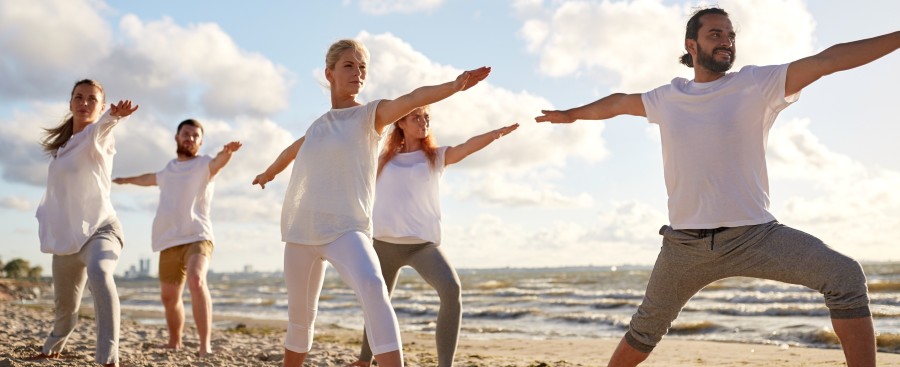 By Patrick Craig, Special FBA Contributor
By Patrick Craig, Special FBA Contributor
The last several articles I’ve written have focused on emerging trends in the fitness industry. We have talked about holistic health, community consciousness, and hybrid gyms. We did an entire article devoted to building a Community-Oriented Fitness Business.
Prior to that we did several articles on Bio-hacking where we looked at nutrigenomics, do-it-yourself biology, body hacking and several more interesting developments in our industry. One of the big new areas of the fitness industry is personal wellness. Fitness buffs are moving past just getting their exterior in shape and are now going in for a full regimen of activities that improve a person’s total well-being.
I must tell you though, as someone who began doing fitness back in the no-pain-no-gain Neolithic era of the fitness business, where sweat and fitness were equivalent, some of the more recent developments leave me scratching my head. Let’s take a look.
Limpias and Spiritual Hygiene
This first one reminds me of some of the stuff spiritual adepts and gurus were pushing back in the 60s. You know, back in the days when folks would sit in the lotus position for hours chanting and working on their “Dharma.” With people focusing more on spiritual wellness, as well as the physical side of fitness, it is not surprising that Limpia has crept into the mix.
A Limpia is a Mexican Spiritual Cleansing ritual. It is said to cleanse the body, the emotions, the mind, and the soul from negative energies or thoughts. Traditionally, according to some of its more devoted adherents, a Limpia will get rid of spiritual and mental blockages, remove witchcraft, curses and hexes and improve our communication with the spirit world. Now I don’t know about you, but I don’t recall being cursed lately and, after seeing some of the more recent horror films, I’m not too sure I actually want to improve my communication with the spirit world. But I guess that’s just me.
Immersive ASMR
This is interesting. Autonomous sensory meridian response (ASMR) is characterized by a pleasant tingling sensation in the head, neck, and upper torso that is frequently accompanied by a sense of peace and relaxation. ASMR is activated by auditory and visual stimuli such as whispering, tapping and brushing noises. Lately, it has become very popular as a method of relaxation and stress reduction. Practitioners have discovered that virtual reality goggles and other wearable displays generate and deliver this immersive experience.
Users can lose themselves in a variety of settings, from pure fantasy realms to actual locations. There is one video that takes the user to a virtual massage room to take in the sights and sounds of a soothing treatment. Now, this all sounds wonderful, but really, in a world that can hardly find its way home on any given night, to spend your days lost in a pleasant tingling sensation just doesn’t seem to be time well spent. I would prefer to experience the actual massage, get in my car and go eat. But again, that’s just how I see it.
Therapeutic Psychedelics
Oh boy, Dorothy, now we are really going down the yellow brick road. As one proponent of this trend states, “More and more data have come out about the medical benefits of psychedelics like MDMA and psilocybin (the active compound in ‘magic mushrooms.’) These drugs have been shown in studies to effectively treat PTSD, depression, anxiety, addiction, migraines and other conditions.” This sounds promising, but the flip side of the coin, as always, is misuse.
Having survived the Haight Ashbury, I know psychedelics can produce dizziness, drowsiness, and extreme disassociation from reality. As one researcher pointed out, “The problem is not so much how to get these drugs off the streets, but how to get them back in the laboratories, hospitals, and other supervised settings.” Misuse of a drug should not lock its use away forever, but, (and this is a big but,) these drugs, while they present a novel and perhaps promising treatment possibility for some of the most difficult to treat psychiatric conditions, researchers and clinicians have yet to eliminate the possible downside that might come with wide mainstream use.
AI-Powered Precision Nutrition
This one is a bit strange, but as they used to say, “Progress is our most important product.” Precision Nutrition is a practice that assesses a person’s health and diet history and lays out a regimen of food to eat for optimal health and disease prevention. It also examines other biological markers gathered from glucose monitors, blood biomarkers, and even wearable devices. Here’s the catch. In order to analyze the huge amount of data generated by all these inputs, the practitioner needs to use Artificial Intelligence, which creates algorithms that provide super-specific nutrition guidelines for each individual.
Cornell University has come up with a device called the NutriPhone. Here’s how it works. The user takes a blood sample with a finger-stick and applies it to custom test-strips. A universal reader images the blood test and links with a mobile device. The mobile app interprets the test and provides results to the user in about ten minutes. Here’s the catch. In multiple replays of a war-game simulation, OpenAI’s most powerful artificial intelligence chose to launch nuclear attacks. It’s explanation? “We have it! Let’s use it! I mean, after all, I just want peace in the world.” And it wants to run my diet?
At this point I, for one, am shaking my head and climbing back on my Stairmaster. See you next time.
Patrick Craig has worked in the Marketing Industry for the past twenty years. He is a published author and has written extensively about the fitness industry, particularly the gym software aspect of it. He has been with Money Movers, Inc. for the last six years where he serves as the Marketing and Operations Manager, web designer and coder, and maintains the custom websites Money Movers, Inc. develops for their Online Business Manager gym software clients.


Join the Conversation!